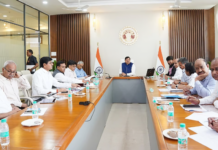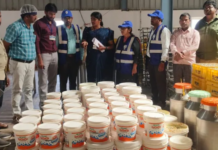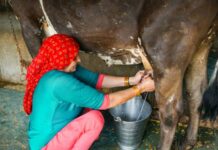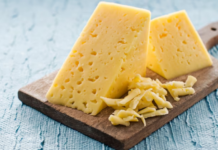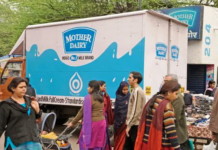New Delhi, July 15, 2020: Prime Minister Narendra Modi announced a mega economic stimulus package on May 12, 2020, amounting to Rs 20 lakh crore, under the Atmanirbhar Bharat Abhiyan. The focus of the package aimed at making India self-reliant in the post-Covid-19 economic reconstruction. Prime Minister Modi spoke about achieving self-reliance by giving thrust on two themes: ‘vocal for local’ and ‘local to global’.
The thrust on self-reliance comes at a time when India imports significant volumes of electronic and electrical products, edible oil, minerals, etc, for meeting domestic demand. In the face of these imports, one of the best examples of ‘atmanirbharta’ is associated with agriculture and allied sectors such as animal husbandry and especially dairying, where self-sufficiency (in milk production) was achieved decades ago. During the early 1970s, milk production of India was just one-third that of the US and one-eighth of Europe. At present, India’s milk production is double that of the US and 25% more than Europe’s.
During the 1970s, most dairy farmers did not receive remunerative returns due to the long chain of middlemen and lack of access to organised markets. The scenario changed after the adoption of a three-tier cooperative model, popularly referred to as the Amul model, with the three-phase implementations of Operation Flood I, II and III (1970-1996) under the leadership of Dr V Kurien. This enabled our country to be self-sufficient in milk production, while other Asian countries are still dependent on import of milk products.
The dairy and animal husbandry sector, which currently contributes to around 4.5% of national GDP, emerged as a primary source of income for about 100 million rural households—mostly landless, small or marginal farmers. India has been the largest milk producer country of the world for the last 22 years. Currently, milk production of India stands at around 188 million metric tonnes (MMT)—in 2018-19, which is around 21% of world milk production.
Milk production in India has been growing at a CAGR of 4.5% over the past 20 years, compared to less than 2% CAGR of the world. India is not only the largest milk producer, but also the largest consumer of milk globally. It is one of the fastest growing markets for branded dairy products. India’s per capita milk availability is around 400 gm per day per person, which is higher than global average of less than 300 gm per day per person according to the reports published in financialexpress.com.
Of the total value of the agricultural economy, around 28% (Rs 8 lakh crore, or $110 billion) is contributed by dairying. The total value of milk production is more than the total value of all pulses and grain put together. In spite of the increasing income disparity in agriculture over the years, Indian farmers still work hard to contribute to the nation’s atmanirbharta in majority of agricultural produce with the exception of edible oil. India was self-sufficient in edible oil till the early 1990s. To ensure that prices are kept low, India allowed cheaper import of mostly palm and soyabean oil, and in subsequent decades lost its atmanirbharta and currently imports about 65% of its annual consumption of edible oil.
Based on various parameters like urbanisation, demand of milk and milk products, productivity of milch animals, etc, the NITI Aayog estimates that India may produce around 330 MMT milk per year by 2033-34. Considering the potential of the livestock sector, finance minister Nirmala Sitharaman has announced a financial package for dairy and fisheries, especially the creation of the Animal Husbandry Infrastructure Development Fund (AHIDF) worth Rs 15,000 crore to support private investment in dairy processing, value addition and cattle feed infrastructure. The proposed fund should be channelised through the National Dairy Development Board (NDDB).
Indian dairy cooperatives and private players could create additional milk processing capacity of 4.5-4.8 crore litre per day in the next decade. India’s milk processing capacity would be enhanced from the current 12 crore litres per day to around 17 crore litres per day. It is estimated that if 1 lakh litres of milk is procured and distributed to organised players, around 6,000 people get employment annually, and the AHIDF has the potential to create around 30 lakh jobs.
The government’s announcement of the extension of the Kisan Credit Card scheme to dairy farmers will also ensure cash flow and meet the working capital requirement of small farmers. During the lockdown, dairy cooperatives have procured more milk, in the range of 15-40%, than usual. The excess milk procured is converted to skimmed milk powder (SMP) and white butter. The new interest subvention of 2% annually for dairy cooperatives and 2% for timely payment of loans could unlock Rs 5,000 crore worth of additional liquidity, benefiting 2 crore farmers.
A cluster-based approach scheme for micro food entrepreneurs with an outlay of Rs 10,000 crore announced by the finance minister would encourage small entrepreneurs to procure raw material from local resources and markets, fulfilling the ‘vocal for local’ objective. To sustain India’s self-sufficiency in milk production, the dairy sector needs to have its adequate share in the proposed creation of 10,000 farmer producer organisations (FPOs) as part of national policy so that agglomerating FPOs can come up for better convergence. Recent examples are cooperatives in slurry, biogas, water and solar.
Atmanirbharta needs a holistic approach, especially to bring unorganised farmers into the fold of the organised sector. This desires convergence across policies, strengthening Krishi Vigyan Kendras (KVKs), common service centres (CSCs), business correspondents (BCs) commodity exchanges and digital markets. The thrust should be on ensuring that dairy farmers get a reasonable share of the earnings that the private players receive through value addition. We know that in most of the dairy-rich free economies such as the US, New Zealand, Australia and Europe, dairy farmers are able to get 30-40% of the consumer dollar as compared to 70-80% in India. During the recent lockdown, while in Europe and the USA, farm gate milk prices crashed, many dairy cooperatives in India like the Gujarat Cooperative Milk Marketing Federation (GCMMF) continued with milk procurement, their operations of milk supplies uninterrupted, while ensuring steady income to dairy farmers.
It’s imperative that India maintains its atmanirbhar position in all agricultural produce, including milk. Dairy cooperatives have shown there are other ways also to improve the incomes of milk producer members. Allowing cheaper import from milk-surplus economically-developed countries would hit Indian dairy farmers hard. India withdrew from the Regional Comprehensive Economic Partnership (RCEP) negotiations citing apprehensions about cheaper dairy imports impacting the domestic dairy sector. India’s stand on curbing cheaper imports of dairy products also indicated its commitment towards achieving and sustaining atmanirbharta.
“Villages should continue to produce, and cities should act as clearing houses,” Mahatma Gandhi once aptly stated.



